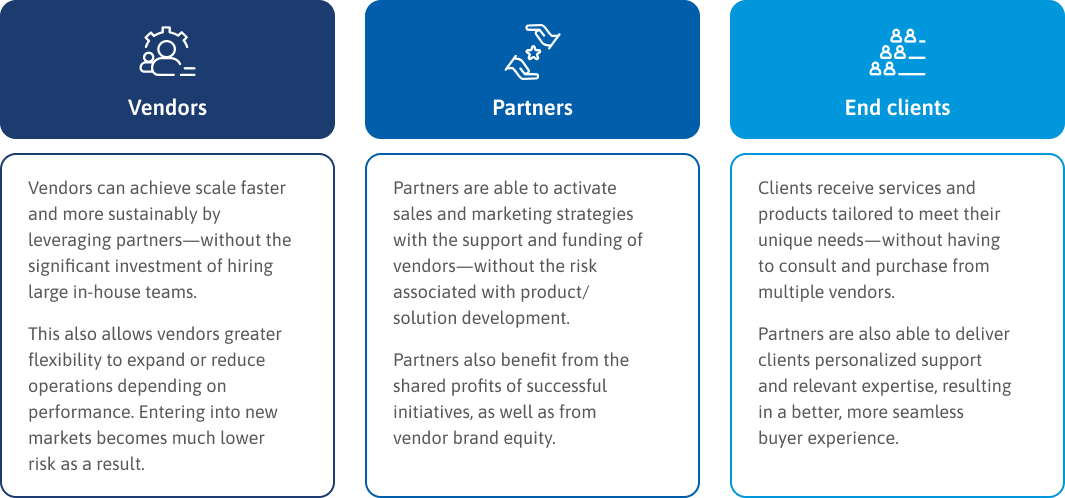Below is a breakdown of the four core steps to establishing channel marketing strategies and building a partner ecosystem.
Carefully analyze the capabilities of potential partners, their reach, the challenges of their markets and most importantly, how they address them to drive revenue. Developing partner assessments specific to your needs can facilitate this process (and will be important for step three).
For example, this process should ensure that partner audiences are aligned with your ICP and target market. Ideally, partners should share intelligence with you to illustrate this, however, combining this with your own research and leveraging your own intelligence can be helpful for discerning the most beneficial partnerships.
Finally, the channel partners you select should also align with your overall business goals and approach to ensure a productive partnership and culture match. This should also include quantifying the ability of partnerships to further said goals.
After determining the best partnerships, approach partners to discuss the details of your agreement. This should include establishing partnership KPIs and goals, as well as the responsibilities of each party involved in achieving them.
Your agreement with channel partners should also cover review cadences to evaluate current performance against the goals set to inform pivoting or optimizing strategies. If necessary, this can also include an assessment of the partnership in general, to determine the need for more extensive changes.
In short, clearly outlining all of the details of each partnership at this stage will help to avoid issues that arise.
A common element of enabling partners to drive value is the attribution of market development funds (MDF) to each partner by the main vendor. While partnerships show great potential, the process of assigning MDF to partners is an area of significant debate in the channel space due to the following three challenges:
- Partners not delivering value due to a lack of MDF
- Partners receiving adequate MDF, but not enough vendor support to activate strategies
- Lack of partner training resulting in MDR going unspent and partner resources not being used
These challenges can result in a cyclical issue where channel partners, even if typically high-performers, are not able to achieve performance goals.
Given that the process of assigning MDF is often informed by performance, this results in partners receiving less for future channel marketing efforts. Conversely, low performance may be influenced by partners not taking full advantage of the funding provided, due to a lack of support—or partner-vendor engagement.
This has led to the development of two key approaches to distributing MDF to partners:
The “business case” system: Partners make business cases to “win” MDF funds for their campaigns and marketing efforts, based on their projected outcomes. This model can also include a percentage of the partner’s funding, which often increases partner engagement and performance. However, vendors relying on this process alone, need to invest in supplying adequate support to partners to encourage them to take the time and resources to develop these bids.
The partner assessment system: Unique to the specifications of each vendor, this process involves evaluating the strengths of each partner, as well as where they require more support. The goal of this system is to align MDF attribution with the capabilities of each partner to enable them to achieve the best results possible. This assessment should also inform the level of vendor support necessary in relation to the goals established in the agreement.
In essence, accurately attributing budgets and MDF are critical elements of ensuring that channel partners are aligned with goals and well-equipped to deliver meaningful and scalable performance with campaigns.
As an extension of your in-house teams, educating and providing training to your partners is a must. This can help them focus on and navigate the evolving expectations of your buyers to provide better experiences and drive engagement.
Depending on your goals, this could include training partners on the types of content and topics best suited to your buyers—or simply keeping partners informed of the top challenges impacting your buyers.
Encouraging the sharing of data insights between partners in your partner ecosystem is also another powerful tactic for ensuring that teams are leveraging the latest intelligence for their campaigns. Consider establishing regular communication with your ecosystem (including partner to partner) to enable reporting and necessary optimizations.













